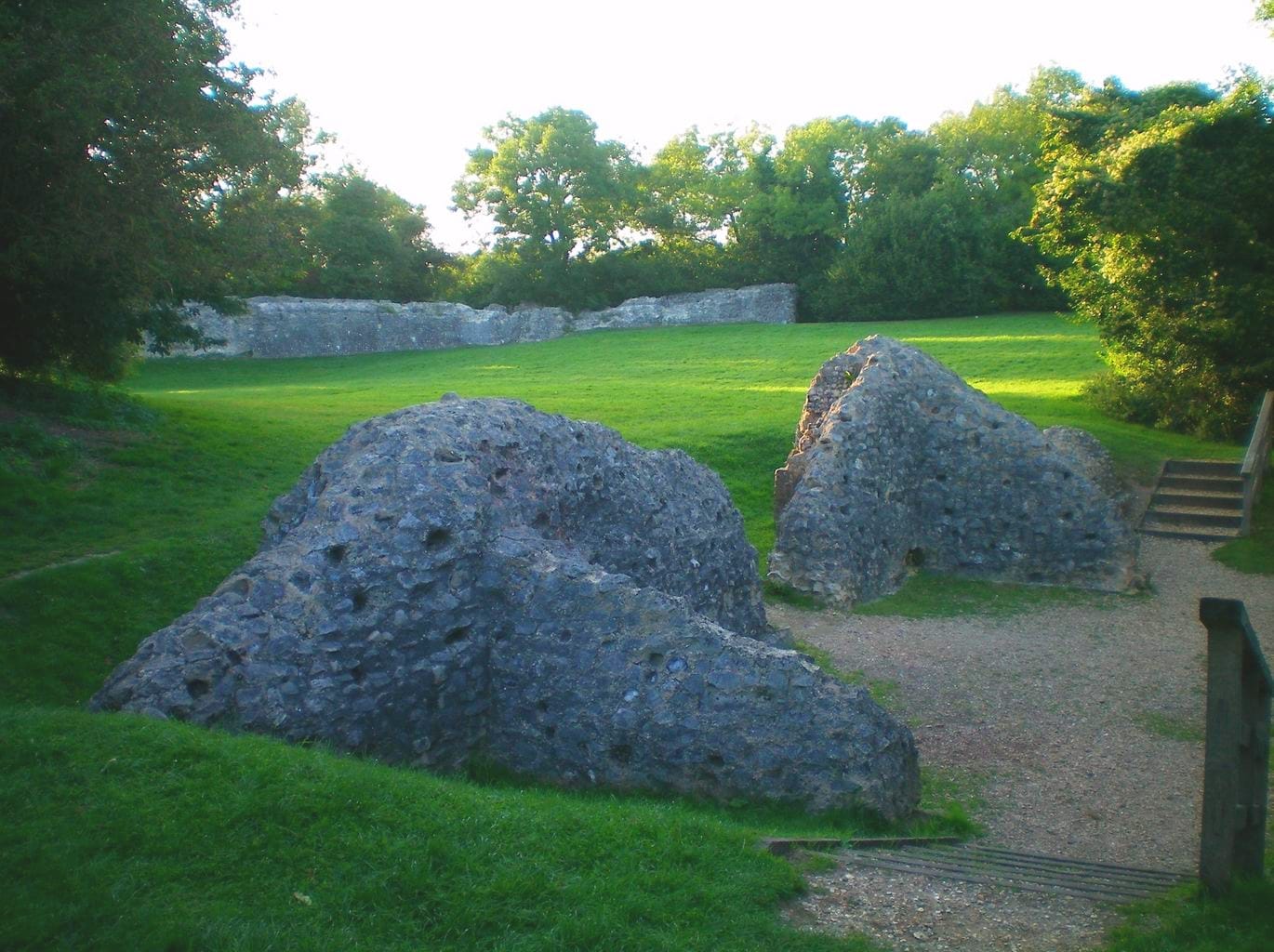Imagine a quaint village nestled in the heart of West Sussex, England, where history whispers from every cobblestone and ancient stone. That’s Bramber – a place where the echoes of Norman conquests and the intrigue of the Knights Templar intertwine with the charm of a thriving modern community. This article explores Bramber’s captivating past and present, revealing hidden gems and charming details for history buffs, scenic walkers, and those seeking a peaceful escape.
Uncovering Bramber’s Secrets: History, Charm & Hidden Gems
Bramber is more than just a village; it’s a living testament to centuries of history, a picturesque retreat, and a surprisingly well-preserved secret. Let’s delve into what makes this place so special.
Bramber Castle: A Norman Stronghold
Around 1066, following the Norman victory at Hastings, the strategically important location of Bramber was selected for the construction of a powerful castle. Likely built by William de Braose, a powerful Norman lord, this wasn’t just any castle; it was a symbol of Norman dominance, a testament to their newly conquered land. Today, only impressive ruins remain, yet these weathered stones still evoke the battles fought and kingdoms won centuries ago. The castle’s design exemplifies Norman military architecture: thick walls, strategically positioned towers – a structure built for near-impregnable defense.
The Knights Templar and Bramber: Legend or Reality?
The story of Bramber takes a fascinating turn with the alleged connection to the Knights Templar. While definitive proof remains elusive, the possibility of these legendary crusaders’ presence adds an exciting layer of mystery. Some believe that St. Mary’s House, a beautiful late 15th-century timber-framed building, may hold links to these enigmatic warriors. Ongoing research may yet uncover further evidence, but for now, the legend persists, enhancing Bramber’s allure.
Beyond the Castle Walls: Discovering Bramber’s Charm
Bramber’s appeal extends far beyond its castle ruins. The village itself is a picture of idyllic English countryside. Narrow, picturesque streets are lined with charming historic cottages, creating a captivating atmosphere. St. Mary’s House, once a haven for weary travelers, stands as a testament to Bramber’s enduring history. Even today, you can almost feel the weight of history within its walls.
This historical charm seamlessly blends with modern life. Welcoming pubs serving local ales and quirky shops offering unique gifts and souvenirs create a vibrant atmosphere, showcasing a delightful fusion of old and new.
Planning Your Bramber Adventure: A Practical Guide
Reaching Bramber is straightforward. You can drive or use public transport; however, checking bus schedules beforehand is recommended. Parking near the castle is limited, so arriving early, especially during peak season, is advisable. There’s likely a small parking fee. Accommodation options in and around Bramber are plentiful, ranging from charming B&Bs and cozy hotels to quaint holiday cottages, catering to various budgets.
Exploring Beyond Bramber: Nearby Gems
Bramber’s idyllic setting also makes it an ideal base for exploring other beautiful parts of West Sussex. Nearby towns like Steyning and Upper Beeding offer additional day trip opportunities, allowing you to extend your West Sussex adventure.
Bramber at a Glance: Quick Facts
| Feature | Details |
|---|---|
| Getting There | By car or bus (check local timetables) |
| Parking | Limited parking near Bramber Castle (arrive early; fees may apply) |
| Accommodation | B&Bs, hotels, and holiday cottages (booking in advance is recommended) |
| Local Businesses | Friendly pubs, tea rooms, and unique shops (check opening times online) |
| Main Attractions | Bramber Castle ruins, St. Mary’s House (check opening times and admission costs, if any) |
Is Bramber Castle Free to Visit?
Yes! Entry to Bramber Castle itself is completely free. This makes exploring this significant piece of history readily accessible to everyone. However, there is a small parking fee (£2 for non-members). Parking spaces are limited, so arriving early is highly recommended. Alternatively, you might consider parking in the village and enjoying a pleasant stroll.
Accessibility and Practicalities
While admission is free, it’s important to note that the castle grounds are uneven, making it potentially challenging for wheelchair users. Comfortable, sturdy shoes are recommended. Remember to bring water, especially during warmer months, as water fountains may not be available on-site. Restrooms and food options are readily accessible in the nearby village. Dogs are welcome but must be kept on a leash. The castle is generally open during daylight hours; however, it’s advisable to always check the latest opening times before visiting.
Who Owns Bramber Castle?
The question of Bramber Castle’s ownership is a fascinating blend of historical records and modern property details.
A Legacy Etched in Stone: Historical Ownership
Bramber Castle’s history begins with the Norman invasion around 1070. William de Braose, a powerful Norman lord, is widely believed to have built the initial castle structure. The de Braose family likely remained the primary owners for several centuries, leaving their indelible mark on the castle’s history. Their control wasn’t without challenges, however; battles, political shifts, and power struggles impacted the family’s rule. Tracing the castle’s owners throughout the centuries requires extensive research, combing through ancient documents and records.
Following the de Braoses, ownership likely changed hands numerous times, with various noble families leaving their respective imprints on the castle’s story. Historians continue to uncover details regarding these shifts in ownership. The full picture is still developing; many threads in this historical narrative are still under active investigation. Due to the complexity of the historical research, we can only offer a partial overview of the ownership history.
| Period (Approximate) | Likely Owner(s) | What We Know About This Time | Further Research Needed In |
|---|---|---|---|
| 1070-1200 | Braose Family | They built the castle and likely ruled for generations. | Local archives, historical records, potentially surviving family documents. |
| 1200-1400 | Various Noble Families | Ownership changed hands; precise details are scarce. | Extensive archival research across multiple institutions. |
| 1400-1984 | A Succession of Owners | Many different owners, often linked to the nobility. | Many records are scattered, some are potentially in private hands. |
| 1984-Present | Peter Thorogood & Roger Linton | Current private owners; this is less readily available publicly. | Local land registry records (access may be restricted). |
Current Ownership: A Modern Perspective
Currently, Peter Thorogood and Roger Linton are identified as the landowners since 1984. However, complete transparency about ownership details for historically significant properties like Bramber Castle is not always commonplace. Further investigation might be needed to confirm the information completely. Despite private ownership, the castle ruins remain open to the public, free of charge, offering everyone the opportunity to explore this magnificent piece of history.
What is the History of Bramber?
Bramber’s story is a captivating narrative woven into the rich tapestry of English history, surpassing simply the story of its iconic castle.
The Dawn of Bramber: A Mysterious Beginning
Before the Norman conquest, evidence of a prominent settlement at Bramber is rather scarce. Archaeological findings suggest limited inhabitation before this period, which makes the rapid growth after the Norman invasion all the more striking.
The De Braose Dynasty: Forging Bramber’s Identity
The arrival of William de Braose marked a turning point. Around 1073, he constructed Bramber Castle, a formidable motte-and-bailey fortress. This wasn’t merely a military stronghold; it became the administrative and economic center of a substantial feudal barony. The de Braose family’s 250-year reign profoundly shaped the village’s development and left an indelible mark on the entire region.
Growth and Prosperity: A Strategic Location
Bramber’s strategic location, positioned alongside ancient trade routes near the River Adur and a Roman road (connecting Dover to Winchester), contributed significantly to its economic growth. Castle and village developed symbiotically, fostering a thriving community linked to trade and agriculture.
Turbulent Times: War and Resilience
The English Civil War brought periods of intense conflict and destruction to Bramber Castle. The ruins we see today stand as stark reminders of the damage and turmoil of that era. However, the village itself endured, adapting and evolving amidst the upheaval.
St. Mary’s House: A Templar Enigma?
St. Mary’s House, a stunning structure dating back to the late 15th century, adds another layer of historical intrigue. Its potential connection with the Knights Templar remains a subject of ongoing discussion and research. It’s likely a blend of fact and legend – some truth intertwined with popular speculation.
Bramber Today: A Living Legacy
Modern Bramber presents a charming blend of historical preservation and modern community life. The village’s rich history is palpable, breathing life into every stone, every street, and every tale. It’s a place where the whispers of the past intertwine seamlessly with the vibrancy of the present day.
Key Highlights of Bramber’s History:
| Era | Key Events | Significance |
|---|---|---|
| Pre-Norman Conquest | Limited evidence of significant settlement | Suggests a later emergence of Bramber as a significant settlement. |
| 11th-14th Centuries | Arrival of William de Braose, construction of Bramber Castle, de Braose rule | Established Bramber as a major feudal center, profoundly influencing its development. |
| Medieval Period | Village development alongside the castle, strategic location on trade routes | Bramber prospered commercially and strategically. |
| English Civil War | Castle destruction | A significant turning point, yet the village persevered. |
| Late 15th Century | Construction of St. Mary’s House | Adds another intriguing layer, possibly linking Bramber to the Knights Templar. |
| Present Day | Bramber as a charming historical village | Successful preservation of history while remaining a thriving community. |
Bramber’s story continues to unfold. Ongoing research may reveal even more surprising aspects of this historically significant village. It remains a captivating destination, a captivating blend of history and charm.
- Unlock 6000+ words beginning with he: A comprehensive analysis - April 20, 2025
- Mastering -al Words: A Complete Guide - April 20, 2025
- Master Scrabble: High-Scoring BAR Words Now - April 20, 2025
















